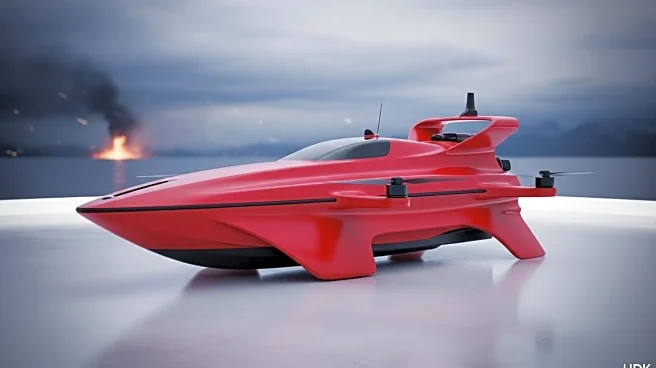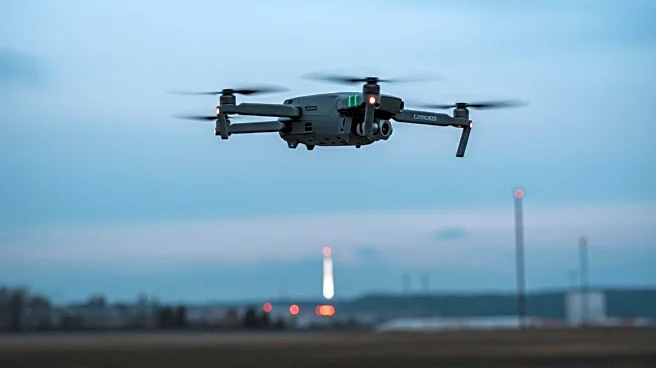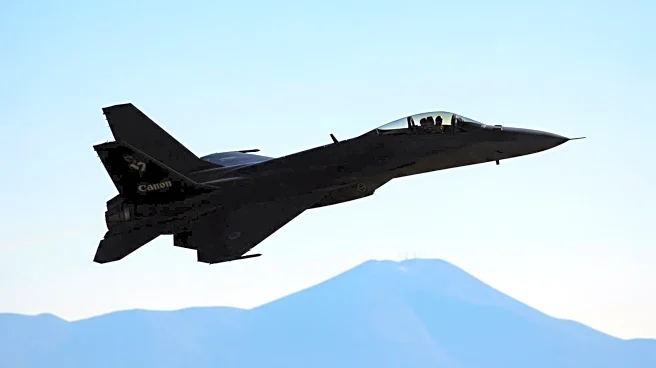What's Happening?
Red Cat, an American military drone developer, has announced plans to market Ukrainian-tested drone boat technology to the U.S. Navy. This initiative follows the innovative use of drone boats by Ukraine in the Black Sea, where they have been used to counter Russian naval forces. These drone boats, initially designed to counter a potential Chinese invasion fleet, have been adapted by Ukraine to include strike UAVs and anti-aircraft missiles. The technology has proven effective in combat, allowing Ukraine to gain control over parts of the Black Sea without a conventional navy. Red Cat's new division, Blue Ops, will produce these vessels in the U.S., offering them as a modular, autonomous maritime defense solution.
Why It's Important?
The introduction of these drone boats to the U.S. Navy could significantly enhance maritime defense capabilities, offering a cost-effective and versatile alternative to traditional naval vessels. This move reflects a shift towards unmanned systems in military strategy, potentially reducing the need for large crewed ships. The technology's success in Ukraine demonstrates its potential to alter naval warfare dynamics, providing the U.S. with a tested and proven system. This development could also influence defense procurement strategies and encourage further investment in unmanned military technologies.
What's Next?
Red Cat plans to begin production of the drone boats in the third quarter of 2025, in collaboration with a U.S. manufacturer of unmanned surface vessels. The U.S. Navy's response to this new technology will be crucial, as it could lead to broader adoption of unmanned systems in naval operations. The success of this initiative may prompt other countries to explore similar technologies, potentially reshaping global naval strategies.
Beyond the Headlines
The deployment of these drone boats raises questions about the future of naval warfare and the ethical implications of unmanned combat systems. As these technologies become more prevalent, there will be increased scrutiny on their use in conflict zones and the potential for escalation without human oversight. Additionally, the economic impact on traditional shipbuilding industries could be significant, as demand shifts towards smaller, unmanned vessels.











